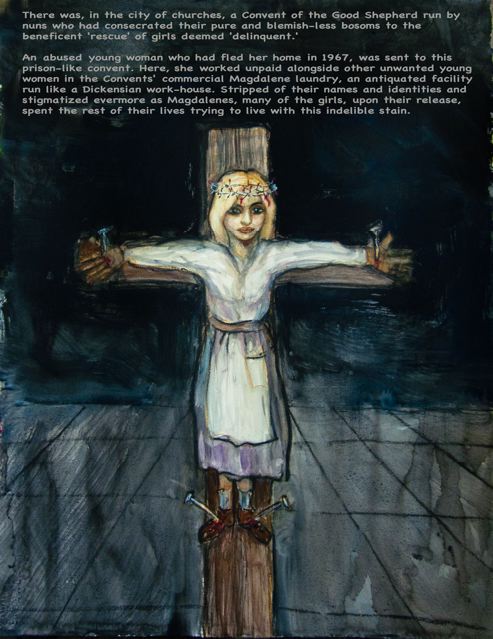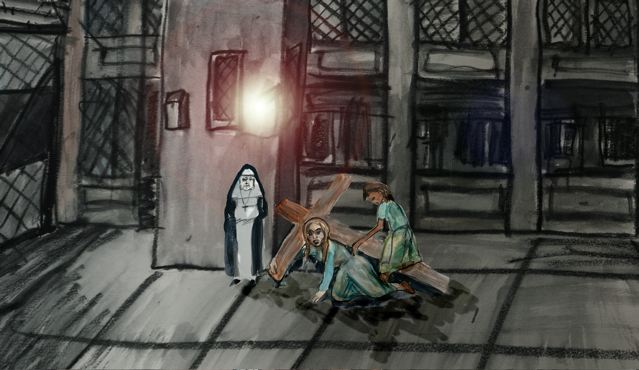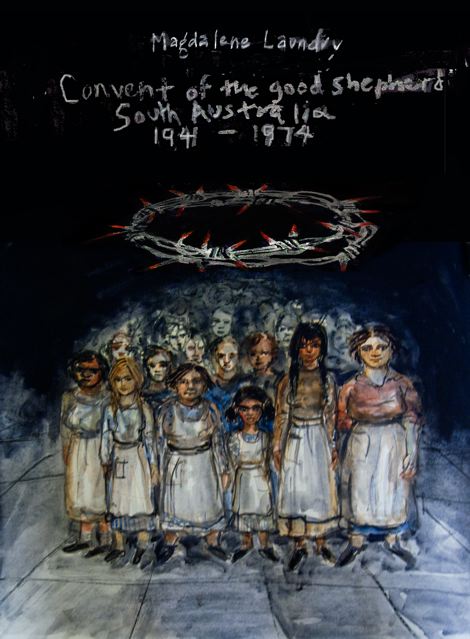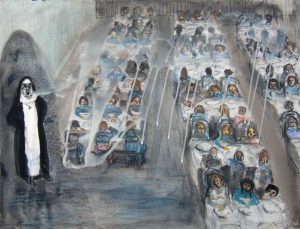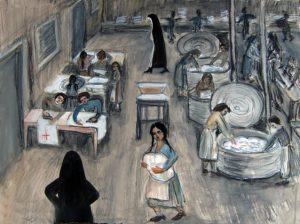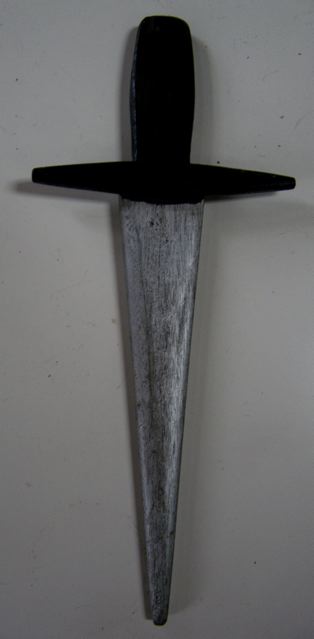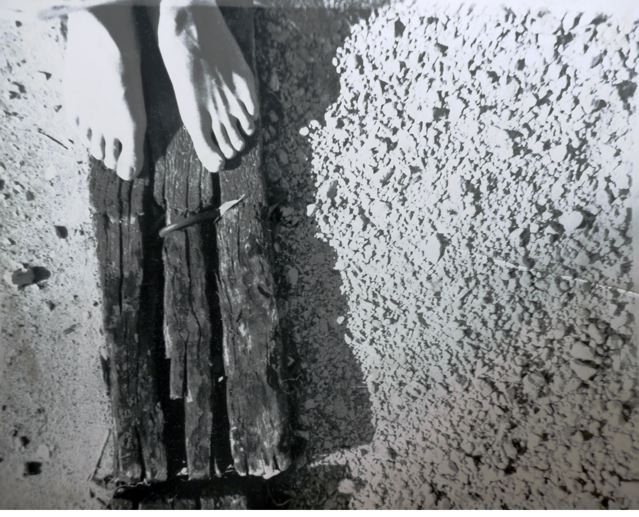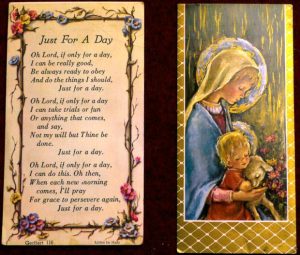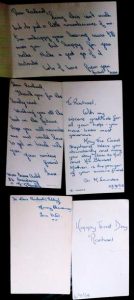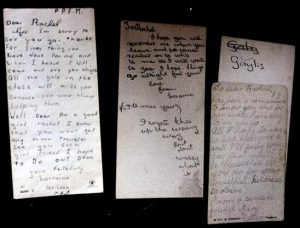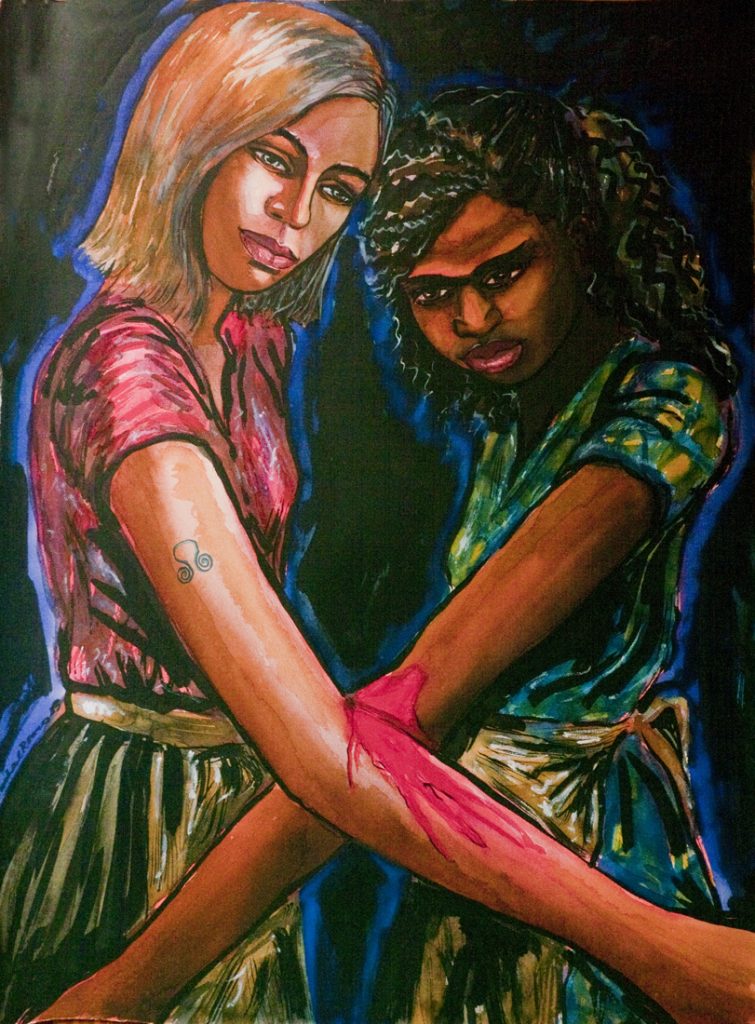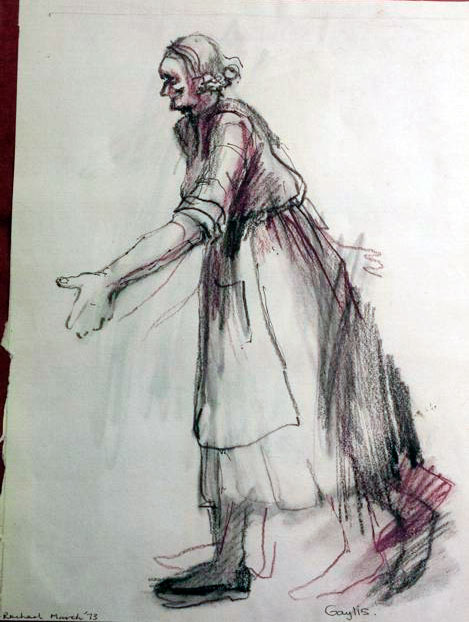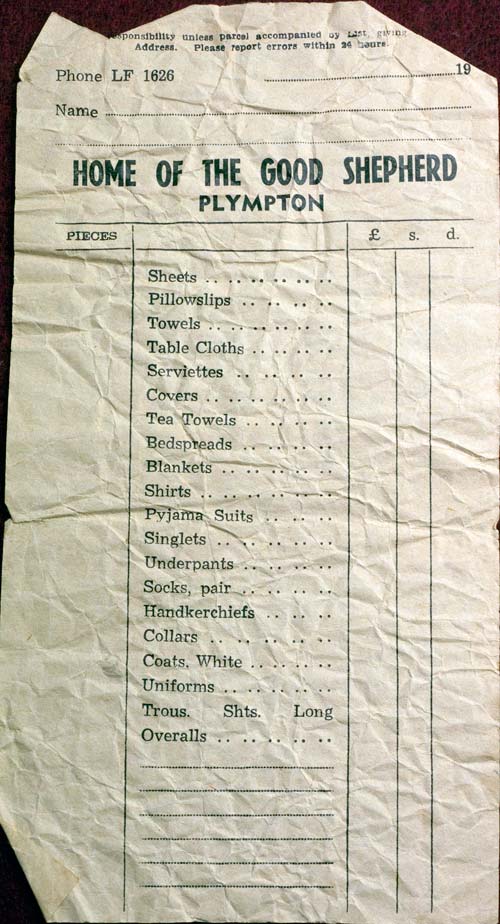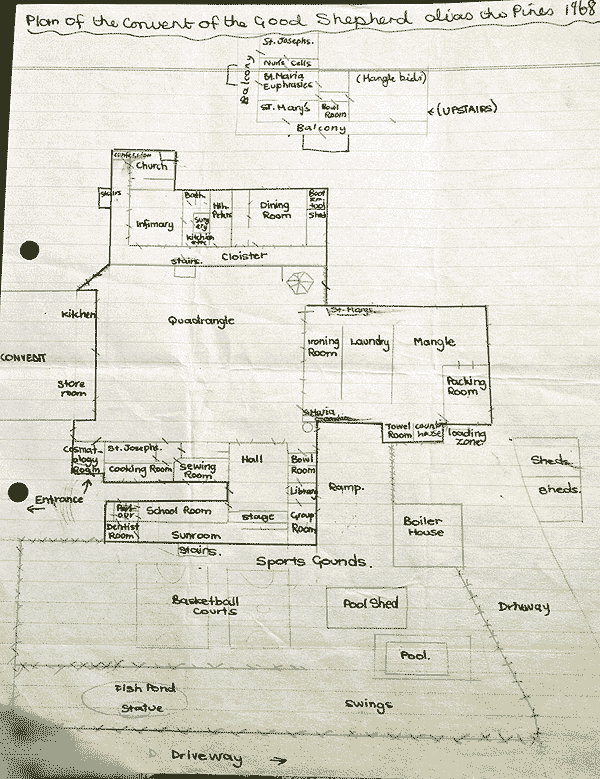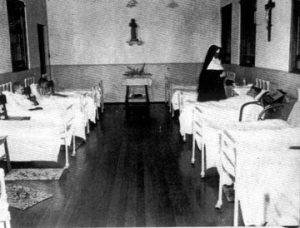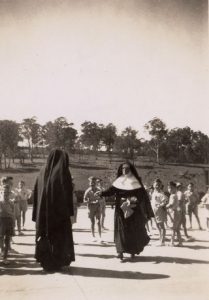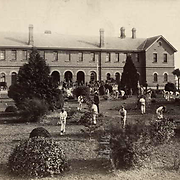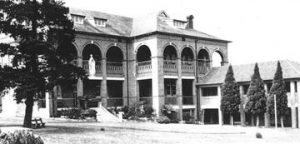Dr Wendy Sutton, who was an inmate in The Pines (Convent of the Good Shepherd, Plympton) shares her experiences, including how she met her life-long friend.
I have not seen the Magdalene Sisters movie, but I have seen the trailer. And for me, the chilling scene where the young girl is simply left at the Convent and the door is closed behind her made me shiver, as this was a feeling that I remember all too well.
I was taken to the Pines after being “appropriately expelled” from my high school. That was one long day. That morning I awoke to find my (social) Father home from work. This never happened on a week day as he was always off to the army barracks. My Mother told me not to dress in my uniform, too late, I had, and I flew out the door with a desperate gripping feeling. I think I walked to school that day, usually I rode my pushbike. My gut was in turmoil, I was stupefied and fearful, but through out my childhood this feeling was my constant companion. However, I knew something was up. I was unsettled that morning at school.
I was at my school desk when my name was blasted over the loud speaker, “Wendy Sutton come to the office.” There was Mum and Dad – a first – sitting in the Headmistresses’ hallway. Mrs. R. was her name. Into the office we all marched like good little soldiers single file. R. sat matronly behind her magnificent desk with my parents sitting on the opposite side discussing this ‘uncontrollable’ person in the room – me.
I was numb. I sat and looked on as they all decided my fate. It was signed, sealed and delivered. I was officially expelled from Strathmont Girls Technical High School at age 13. The red-headed deputy headmistress was loitering out side R.’s office, and as my parents and Miss R. shook hands and passed solemn pleasantry’s amongst themselves, Red gestured me over to her.
She looked at me like a sad-eyed spaniel, with her head cocked to one side and biting her lip, she took my hand and said, “For what it is worth Wendy, I am so sorry.” She was kind, and so was R., although they did not agree with my parents’ judgement concerning me, they still allowed the process to continue. “It’s for the best” they said.
That day was filled with erratic emotions, I collected all my books and belongings. I remember my entire class rallied around giving me suggestions on how to “run away” or “escape”. A friend, Glen H., offered me $2.00 to catch a train and get as far away as possible so my parents would never find me. My physical education teacher hugged me and cried as she asked what she could do to help me. She then gathered the class in the sports shed to wish me well and everyone was howling. My dearest friends clung to me like bees to honey. It was awful but at the same time wonderful to know how these people loved me.
“I am only going for three weeks” … I blubbered through my snot and tears. I was weak, lost but I soon clicked into disassociate mode which I knew how to do so well by age 13. I think I walked home, talk about the prey walking into the den! I was 13 for God’s sake, a very psychologically, spiritually and physically wounded young girl. My teachers knew this as they constantly had me in the office asking questions about my obviously battered body. Of course, I always fell off a swing, fell over, had a fight with my sister …
All I remember next was that silent drive in the little green Ford to the Pines and up the long driveway. I have a reoccurring dream of that long driveway… but it is a positive dream now-a-days taking me along a long and winding driveway filled with grand exotic trees and powerful waterfalls which lead to my home. A home that has not materialised to this day, mind you!
Then with the same poof and pageantry as with R., I was handed over to the nuns in total silence. This is where I felt the impact of the Magdalene Sisters movie trailer, when that door was slammed behind me and I was alone not knowing what the hell was going on. I was never informed! I was silently aching. I had literally been thrown away … yet again. I just kept thinking it is only for three weeks, yeh right! Three weeks led to 12 months!
It was as though I was in that cold empty room for hours when Mother Superior came in and handed me a tidy bundle of drab looking clothes and instructed me to undress. She took my “outside” clothes and she then ushered me into a damn hot disinfectant bath, I will never forget it. Mother – silent but with a stern look on her face- scrubbed me down from head to toe with a bristled scrubbing brush. I was filthy from sin apparently. But, I was a virgin. I was molested by a close family friend – but my Mother did not believe me – and violently raped at 13, but still a virgin to consensual sex. I did not smoke nor do drugs.
According to my Mum I was uncontrollable, and you know, I am sure I was in her eyes, I was always seeking her attention, apparently. Although I believe this to be true as my Mother did not want me, she herself came out from a sordid marriage with my 7 month old sister in tow and, me on the way! I do not blame my Mother or my Father. They did what they thought was right at the time.
The bath was done, I was told to stand, I did. Mother inspected my body. I was red raw and crying, well snivelling really as I was too scarred to really let go. Mother passed me a towel that was almost as hard as the bristles on that damn brush! She instructed me to dress. Out she went and closed the door, gently, behind her. I was alone and empty once again wondering what on earth was going on. I consoled myself by thinking I was only in this place for 3 weeks.
Now all dressed up in my “inside clothes” looking like some orphan Annie with wet unruly hair and stinking of disinfectant, eyes red and stinging like fire! I looked about the dark brick room which housed this huge ugly bath, no furniture that I remember anyway, no windows, just two doors. Some of us Magdelene laundresses remember that bath very well.
Mother Superior materialised. It was as though she glided into the room from out of nowhere, with her long black habit flowing all round her, she startled me. “Your name will be Jane” she instructed. Then she opened THAT door which led to a concrete court yard. Before I could ask a single question the door was slammed and bolted behind me.
I remember this as if it were yesterday; as the door slammed behind me I turned to see this concrete slab enclosed by TALL fencing with barbed wire on top. I shook, I peed myself, I just wanted to die! I could not cry out loud, but the tears streamed down my face. Other “inmates” came to inspect the new comer and some laughed at me, others looked on from a distance, but one girl stood out amongst the rest, Sharon. Sharon smiled and said “Don’t worry about them.” FORTY FOUR years later we are still the dearest of friends!
So, this was my introduction to the Pines …

